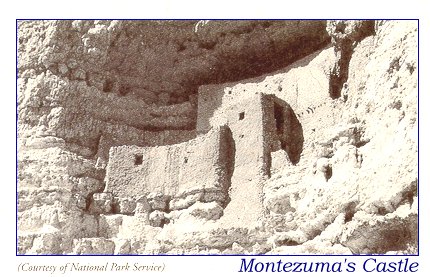
 |

|
|
|
Passive solar heating and cooling refers to building designs that take advantage of natural phenomena such as,
sunlight, shade, orientation, wind, and materials with heat retention characteristics. Awareness and use of this knowledge provides comfortable
living environments with minimum energy use.
In the northern hemisphere, the winter sun appears low on the southern horizon, providing heat and light directly on south
facing walls. During the summer, the sun appears higher in the southern sky while the walls are shaded by the roof overhang or other structures. The placement of windows and doors on any south facing wall allows the sun's radiant energy to heat the interior. Well planned walls and floors
hold the heat collected during the day and slowly release that heat during the night as the outside air temperature drops. The result, much less
energy is needed to keep the building warm. This capacity is called thermal mass.
Thermal mass materials like stone, concrete, and adobe slowly absorb heat through the day, but as the temperatures drop in
the evening the heat is slowly released, warming the surrounding air. To experience the thermal mass firsthand, walk barefoot on a concrete sidewalk after the sun has
gone down. The sidewalk will feel warmer than the surrounding air. During the summer the sidewalk may still be "too hot" for barefeet
until long after sundown. The next morning the sidewalk will be cooler than the current air temperature and will heat slowly
as the sun rises. The Desert House utilizes this thermal mass principle.
Other examples of building using thermal mass principles include Montezuma's Castle in central Arizona and the ancient
cities of Greece and Rome.
| |
 The Sinagua cliff dwelling known as Montezuma's Castle was occupied between AD 1100-1300 and is located inside a shallow south-facing limestone rock shelter. | |
|
Insulation, or the prevention of heat passage, is another important consideration for structures built in areas with temperature
extremes. Preventing heat from entering in the summer or leaving the structure in the winter can minimize reliance on thermal mass and energy consuming heating
and cooling devices. In areas where nighttime temperatures remain high or daytime temperatures remain low, the building's thermal mass
may not cool or heat sufficiently. In these cases insulation can minimize the use of artificial temperature balancing appliances.
| |
|
[ Return to Desert House: Table of Contents Page ] [ Next: Desert House - Passive Heating and Cooling ] © 1999 DESERT BOTANICAL GARDEN. Last Modified: March 27, 1999 HTML Maintained by: WebMaster |